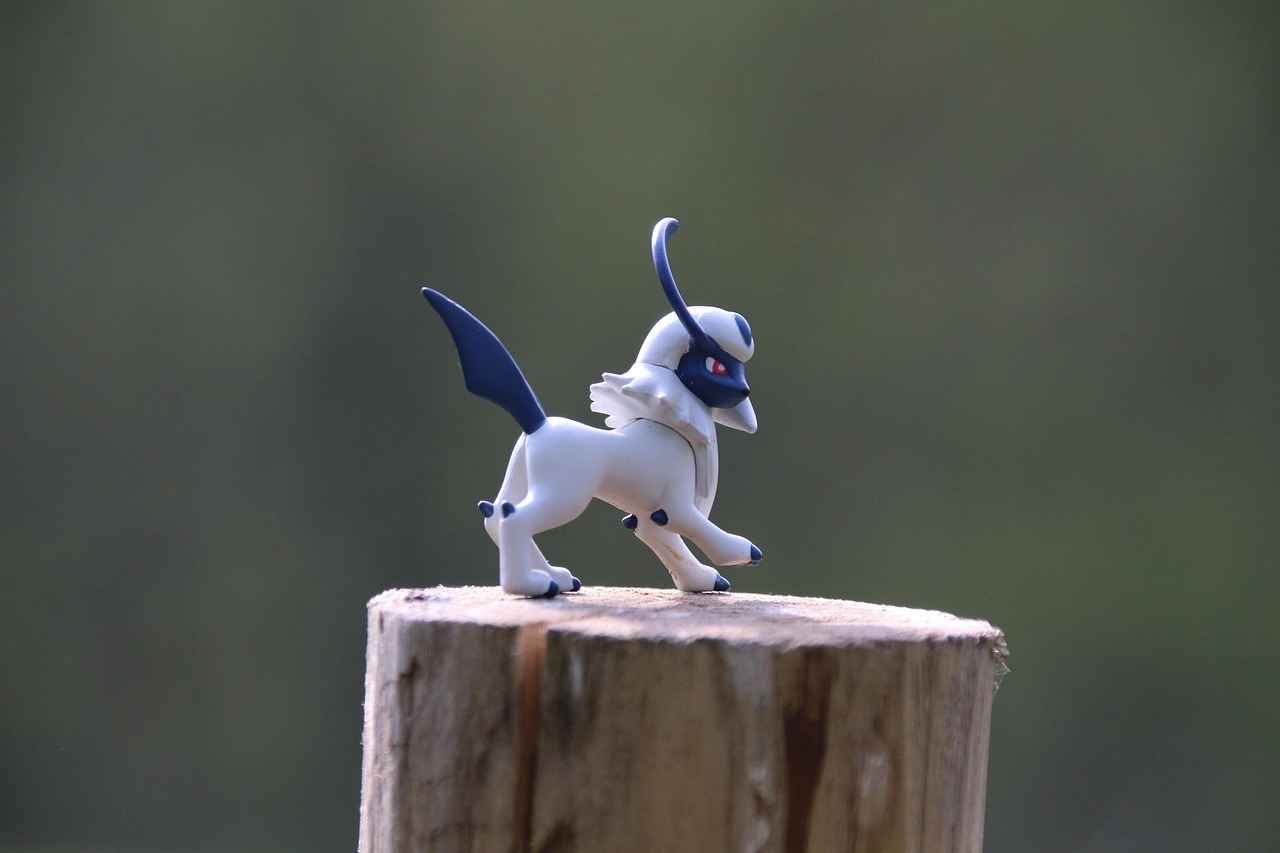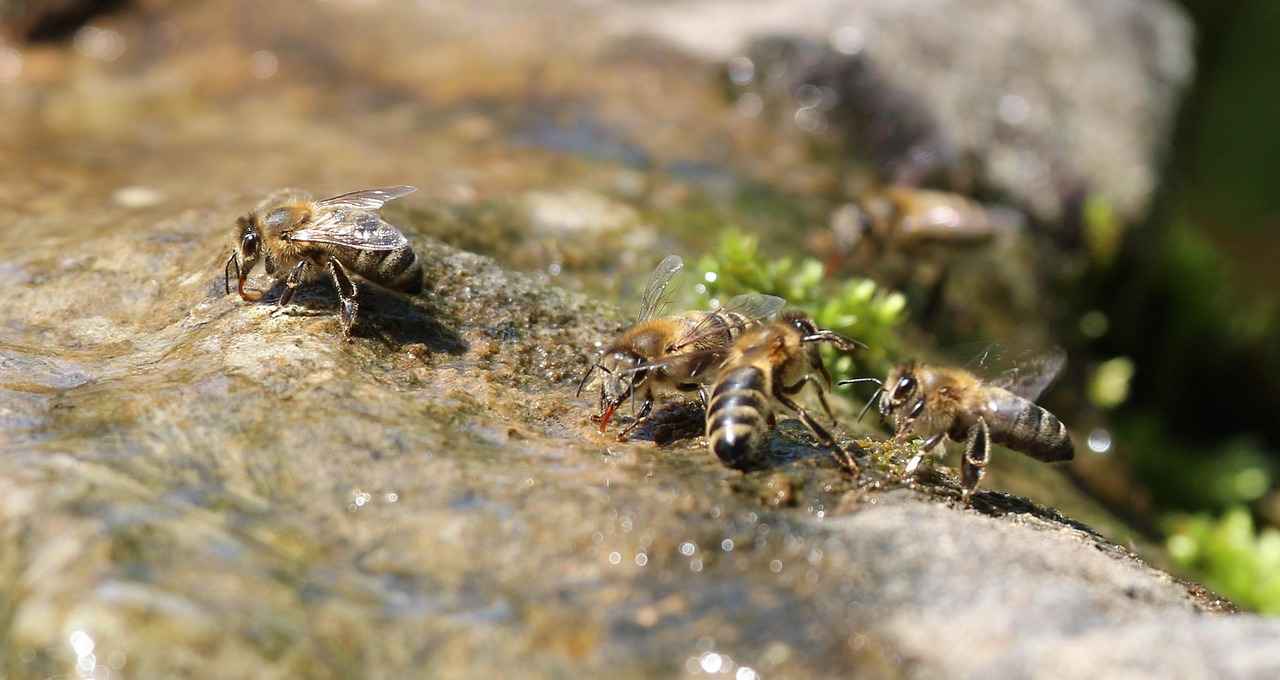Krookodile is a Ground/Dark-type Pokémon known for its impressive physical stats and unique abilities, making it a formidable contender in competitive battles. This article delves into the distinct attributes of Krookodile, its viability in various formats, and effective strategies for trainers to maximize its potential in contests.
Krookodile features a base Attack stat of 117, making it one of the most potent physical attackers in the Pokémon universe. Additionally, its ability, Intimidate, lowers the Attack of opposing Pokémon upon entering the battle, providing a strategic advantage. With a solid Speed stat of 92, Krookodile can outspeed many threats, allowing it to strike first.
To enhance Krookodile’s battle performance, selecting the right moveset is essential. Here are some optimal moves:
- Earthquake – A powerful STAB move that hits all adjacent Pokémon in Double Battles.
- Knock Off – This move not only deals damage but also removes the target’s held item, disrupting their strategy.
- Stone Edge – Provides coverage against Flying-types that may threaten Krookodile.
With its high Attack stat, Krookodile excels in dealing physical damage. Moves like Earthquake and Knock Off are essential for maximizing damage output while also providing utility in battles.
Although primarily a physical attacker, Krookodile can utilize special moves like Fire Blast to surprise opponents, particularly those weak to Fire-type attacks.
Krookodile thrives in teams that can cover its weaknesses. Roles such as a lead or wallbreaker can be effectively executed with proper team composition. Pairing it with Pokémon that can handle its weaknesses to Water, Ice, and Fairy types is crucial.
Understanding Krookodile’s vulnerabilities is vital. It is weak to:
- Water
- Ice
- Fairy
Utilizing Pokémon that can switch in safely against these types can help maintain Krookodile’s presence in battle.
Krookodile’s effectiveness varies across competitive formats such as VGC and Smogon. In VGC, its ability to intimidate opponents is particularly useful, while in Smogon, it often finds a place in higher tiers due to its strong offensive presence.
To master Krookodile, trainers must understand its strengths and weaknesses, along with optimal strategies for battle. By leveraging its unique attributes and building a supportive team, trainers can achieve significant success and make the most of this powerful Pokémon.

Understanding Krookodile’s Attributes
Krookodile is a ground/dark type Pokémon that has gained recognition for its impressive stats and versatile abilities. As a formidable opponent in competitive play, understanding its attributes is crucial for trainers aiming to maximize its potential in battles.
Krookodile boasts a formidable Attack stat of 117, allowing it to deal significant damage with physical moves. Its Speed stat of 92 enables it to outspeed many common threats, making it a valuable asset in various team compositions. Additionally, Krookodile’s ability, Intimidate, lowers the Attack of opposing Pokémon upon entering the battle, providing a strategic advantage.
- Base Stats:
- HP: 95
- Attack: 117
- Defense: 80
- Special Attack: 65
- Special Defense: 70
- Speed: 92
- Abilities:
- Intimidate: Lowers the opposing Pokémon’s Attack.
- Moxie (Hidden Ability): Boosts Krookodile’s Attack after knocking out an opponent.
These attributes make Krookodile a versatile Pokémon that can function both as a lead and a wallbreaker. Its typing grants it resistance to Psychic and Ghost moves, while its ability to learn a variety of moves allows it to adapt to different battle scenarios.
In conclusion, understanding Krookodile’s attributes is essential for trainers looking to leverage its strengths effectively. By utilizing its impressive stats and abilities, trainers can enhance their competitive strategies and improve their chances of success in battles.

Best Movesets for Krookodile
Selecting the right moveset is crucial for maximizing Krookodile’s effectiveness in battles. With its unique typing and impressive base stats, Krookodile can be a formidable opponent when equipped with optimal moves. This section will delve into the best movesets that include STAB (Same Type Attack Bonus) options and essential coverage moves to enhance its battle performance.
- STAB Moves:
- Earthquake: This move is a staple for Krookodile, providing high base power and excellent coverage against many types, making it a reliable choice for dealing damage.
- Knock Off: Not only does this move deal good damage, but it also removes the opponent’s item, providing utility and disrupting their strategy.
- Coverage Moves:
- Stone Edge: This move is effective against Flying types and can surprise opponents who may not expect it, providing valuable coverage.
- Fire Fang: A great option against Steel and Bug types, Fire Fang can help Krookodile deal with threats that resist its STAB moves.
- Status Moves:
- Stealth Rock: Setting up hazards can be game-changing, allowing Krookodile to support its team while also applying pressure on the opponent.
- Taunt: Disrupting opponents’ strategies by preventing them from using status moves can turn the tide in battle.
In conclusion, the effectiveness of Krookodile in competitive play hinges on the selection of its moveset. By utilizing a combination of STAB options, coverage moves, and strategic status moves, trainers can significantly enhance Krookodile’s performance in battles. Understanding the strengths and weaknesses of these moves will allow players to adapt their strategies and maximize their chances of victory.
Physical Attacks
Krookodile is a formidable Pokémon known for its exceptional physical attack capabilities. Trainers looking to maximize its potential in battles should focus on its key moves that not only deal massive damage but also offer strategic advantages.
Krookodile excels with powerful physical attacks, making it a top choice for trainers aiming to dominate in competitive play. Its signature moves, Earthquake and Knock Off, are particularly noteworthy for their effectiveness in various battle scenarios.
- Earthquake: This move is a must-have in Krookodile’s arsenal. As a STAB (Same Type Attack Bonus) move, Earthquake benefits from Krookodile’s high Attack stat, allowing it to deal significant damage to a wide range of opponents. Its ground-type nature makes it especially effective against Electric, Fire, and Steel types.
- Knock Off: This move not only inflicts damage but also removes the target’s held item, providing a dual utility that can cripple many opponents. The ability to disrupt strategies that rely on items makes Knock Off a valuable addition to Krookodile’s moveset.
In addition to these moves, Krookodile can utilize other physical attacks such as Stone Edge and Crunch, which provide coverage against Flying and Psychic types respectively. This versatility allows Krookodile to adapt to different opponents and situations, enhancing its role as a powerful wallbreaker.
To maximize Krookodile’s potential, it’s essential to consider its ability, Intimidate, which lowers the Attack of opposing Pokémon upon entry. This ability not only bolsters Krookodile’s survivability but also allows it to switch in against physical attackers more safely.
In conclusion, by focusing on Krookodile’s powerful physical attacks and understanding how to leverage its moves effectively, trainers can create a formidable presence on the battlefield. Mastering these strategies will ensure that Krookodile remains a top contender in competitive play.
Special Attacks
Krookodile’s Special Attacks: A Surprising Edge in BattleKrookodile is widely recognized as a powerhouse in the competitive Pokémon scene, primarily due to its formidable physical attack capabilities. However, its can often catch opponents off guard, adding an unexpected layer of strategy to its gameplay. This section delves into some of the most effective special moves that trainers can utilize to diversify Krookodile’s approach in battles.
- Flamethrower: This move provides excellent coverage against Steel and Grass types, allowing Krookodile to deal with threats that would normally resist its physical attacks. The potential for burning opponents adds a layer of utility, reducing their damage output.
- Ice Beam: With its ability to hit Dragon, Flying, and Ground types for super effective damage, Ice Beam is a valuable asset. It also serves as a great counter to common threats like Garchomp and Salamence.
- Dark Pulse: While Krookodile is naturally a Dark type, utilizing Dark Pulse allows it to capitalize on its Special Attack stat. This move can be particularly effective against Psychic and Ghost types, providing a reliable option when physical moves may not be as effective.
- Earth Power: This move not only benefits from STAB (Same Type Attack Bonus) but also has a chance to lower the opponent’s Special Defense. This can create opportunities for Krookodile to sweep through teams once the opposition’s defenses are weakened.
Incorporating these special attacks into Krookodile’s moveset can significantly enhance its versatility in competitive play. By keeping opponents guessing, trainers can effectively shift the momentum of battles in their favor. The element of surprise is a powerful tool, and with the right strategy, Krookodile can become an unpredictable force on the battlefield.
Status Moves
Krookodile Pokémon: How to Use It in Competitive PlayKrookodile is a versatile Pokémon that excels in both offensive and defensive strategies. While its powerful physical moves often take center stage, its are equally crucial in shaping the dynamics of a battle. In this section, we delve into the significance of status moves like Stealth Rock and Taunt, which can turn the tide in your favor.
Understanding Status Moves
Status moves are non-damaging techniques that can inflict various effects on opponents or the battlefield. Krookodile, with its unique typing and abilities, can effectively utilize these moves to disrupt enemy strategies and provide valuable support to its team.
Stealth Rock: Controlling the Battlefield
- Stealth Rock is a crucial entry hazard that deals damage to opponents upon switching in, based on their type. This move is particularly effective against Flying and Fire types, making it a strategic choice for Krookodile.
- By setting up Stealth Rock early in the match, Krookodile can weaken opposing Pokémon, making them more susceptible to knockouts from your offensive team members.
Taunt: Disrupting Opponent Strategies
- Taunt prevents opponents from using non-damaging moves, effectively shutting down setup strategies and status inflictions. This is especially useful against defensive Pokémon that rely on moves like Recover or Will-O-Wisp.
- Utilizing Taunt can force your opponent into a more aggressive playstyle, allowing Krookodile to capitalize on their desperation.
Conclusion: Maximizing Krookodile’s Potential
Incorporating status moves like Stealth Rock and Taunt into Krookodile’s moveset not only enhances its viability in competitive play but also provides essential support for your team. Understanding when and how to use these moves can significantly impact the outcome of battles, making Krookodile a formidable opponent on the battlefield.
Team Synergy and Roles
Krookodile’s Team Synergy and RolesKrookodile is a versatile Pokémon that can excel in various roles within a team, particularly as a lead or wallbreaker. Understanding its strengths and how to build a team around it is essential for maximizing its potential in competitive play.
To effectively utilize Krookodile, trainers should consider the following roles:
- Lead: As a lead, Krookodile can set up hazards like Stealth Rock, applying early pressure on the opponent. Its ability, Intimidate, can lower the Attack of opposing Pokémon, allowing Krookodile to take hits more effectively while setting up.
- Wallbreaker: With its high Attack stat and access to powerful moves like Earthquake and Knock Off, Krookodile can break through defensive teams. It excels at removing items from opponents, making it easier for teammates to sweep.
When building a team that complements Krookodile, consider the following strategies:
- Supportive Teammates: Pair Krookodile with Pokémon that can set up entry hazards or provide status support. Pokémon like Ferrothorn can set up Spikes or Stealth Rock, while Rotom-Wash can spread Burn with Will-O-Wisp.
- Coverage Options: Include Pokémon that can cover Krookodile’s weaknesses, such as Fairy and Water types. Pokémon like Gardevoir or Zapdos can handle threats that Krookodile struggles against.
- Speed Control: Since Krookodile is relatively fast, pairing it with Pokémon that can manipulate speed, such as Tailwind users or Trick Room setters, can enhance its effectiveness in battle.
In conclusion, Krookodile thrives in well-structured teams that enhance its capabilities as a lead or wallbreaker. By strategically selecting teammates that support its strengths and mitigate its weaknesses, trainers can create a formidable lineup that maximizes Krookodile’s impact in competitive play.

Countering Common Threats
Understanding Krookodile’s weaknesses is essential for effective play. By identifying its vulnerabilities and the strategies that opponents may employ against it, trainers can better protect their Krookodile during battles. This section will delve into the common threats faced by Krookodile and the tactics that can be utilized to mitigate these risks.
- Type Weaknesses: Krookodile is a Ground/Dark type Pokémon, which makes it susceptible to several types of moves. Specifically, it has a notable weakness to Water, Ice, and Fairy type attacks. Trainers should be aware of these weaknesses and consider using Pokémon that can absorb or resist these types when facing opponents likely to exploit them.
- Common Opponent Strategies: Opponents often capitalize on Krookodile’s weaknesses by employing moves that take advantage of its vulnerabilities. For example, using Pokémon with Ice Beam or Fairy Wind can quickly turn the tide of battle. Recognizing these common strategies allows trainers to anticipate and counteract them effectively.
- Defensive Tactics: To protect Krookodile, trainers can incorporate Pokémon that offer defensive synergy. For instance, pairing Krookodile with a Pokémon that resists Ice and Fairy types, such as a Steel or Fire type, can create a balanced team that mitigates these threats.
- Utilizing Status Moves: Moves like Taunt can prevent opponents from setting up their strategies, while Stealth Rock can chip away at opposing Pokémon’s health, making it easier for Krookodile to handle threats.
By understanding and preparing for these common threats, trainers can enhance their effectiveness in battles and ensure that their Krookodile remains a formidable opponent.
Type Weaknesses
Krookodile’s Type WeaknessesKrookodile, a dual-type Ground and Dark Pokémon, is known for its formidable presence in battles. However, its typing also presents certain vulnerabilities that trainers must be aware of to maximize its potential in competitive play. Understanding these weaknesses is essential for formulating effective strategies and ensuring Krookodile remains a valuable asset on your team.
One of the primary weaknesses of Krookodile is its susceptibility to Water type moves. Water-type Pokémon can exploit this vulnerability, dealing significant damage with moves like Hydro Pump or Surf. Trainers can mitigate this risk by pairing Krookodile with Pokémon that resist Water-type attacks, such as Electric or Grass types, providing a buffer against these threats.
Additionally, Krookodile is weak to Ice type moves. Ice-type Pokémon can pose a significant threat, especially those that utilize moves like Icy Wind or Ice Beam. To counter this, trainers should consider including Pokémon with Steel or Fire types on their team, as these types can effectively absorb Ice-type attacks while providing offensive pressure in return.
Another notable vulnerability is to Fairy type moves. With the rise of Fairy-type Pokémon in competitive play, Krookodile can find itself at a disadvantage against moves such as Moonblast or Play Rough. To address this weakness, trainers might want to include Pokémon that can resist Fairy-type moves, such as Steel or Poison types, thus enhancing team synergy and protecting Krookodile from potential threats.
In summary, while Krookodile is a powerful Pokémon, its weaknesses to Water, Ice, and Fairy types must be carefully managed. By building a well-rounded team that can cover these vulnerabilities, trainers can ensure that Krookodile remains a dominant force in their competitive lineup.
Common Opponent Strategies
In the competitive world of Pokémon battles, understanding your opponent’s strategies is crucial for success. Krookodile, with its unique typing and abilities, can be both a powerful asset and a target for various tactics. This section delves into the common strategies employed against Krookodile and provides effective countermeasures to maintain your advantage in battles.
- Water-Type Moves: Many trainers utilize Water-type Pokémon to exploit Krookodile’s weakness. Moves like Hydro Pump or Surf can deal significant damage. To counter this, consider switching to a Pokémon with resistance to Water or using moves like Rock Slide to retaliate.
- Fairy-Type Attacks: Fairy-types pose a serious threat to Krookodile due to its Dark typing. Pokémon like Gardevoir or Tapu Koko can use moves like Moonblast effectively. Utilizing a Steel-type Pokémon or employing Taunt can disrupt their strategy.
- Ice-Type Moves: Ice-type attacks, such as Icy Wind or Ice Beam, can quickly take down Krookodile. To mitigate this, consider using Intimidate to lower the opponent’s Attack or bringing in a Pokémon that can resist Ice-type moves.
- Set-Up Sweepers: Opponents may try to set up with Pokémon that boost their stats. Moves like Swords Dance or Calm Mind can be detrimental if Krookodile is not prepared. Utilizing Taunt can prevent them from setting up, while also allowing Krookodile to strike first.
By anticipating these strategies, trainers can effectively counteract moves aimed at Krookodile, ensuring it remains a formidable presence in battle. Developing a keen sense of your opponent’s tactics will not only enhance your gameplay but also increase your chances of victory.

Competitive Formats and Tiers
Krookodile is a versatile Pokémon that showcases its strengths in various competitive formats. Its effectiveness can fluctuate based on the tier and the specific rules of engagement, making it essential for trainers to understand where it can shine the most. This section delves into the performance of Krookodile across different competitive tiers, providing insights that can help trainers make informed decisions on its usage.
Krookodile’s presence in competitive play is notable, particularly in OU (OverUsed) and UU (UnderUsed) tiers. In these formats, it often serves as a powerful wallbreaker due to its high Attack stat and access to moves like Earthquake and Knock Off. In OU, it faces stiff competition from other top-tier threats, yet its ability to check common Pokémon such as Tapu Koko and Gardevoir makes it a valuable asset.
In the VGC (Video Game Championships) format, Krookodile shines as a potent option due to its unique typing and ability Intimidate. This ability allows it to lower the Attack of opposing Pokémon, providing a significant advantage in double battles. Trainers often pair Krookodile with partners that can capitalize on its strengths, such as Dragapult or Incineroar, creating a dynamic synergy that can overwhelm opponents.
The competitive landscape is ever-changing, with shifts in the meta influencing Krookodile’s viability. Recent trends show an increase in Fairy and Water types, prompting trainers to adapt their strategies accordingly. By incorporating moves that counter these threats, such as Rock Slide or Poison Jab, trainers can enhance Krookodile’s effectiveness and ensure it remains a formidable contender.
In conclusion, understanding the different competitive formats and tiers is crucial for maximizing Krookodile’s potential. By analyzing its performance and adapting strategies to current trends, trainers can effectively utilize this powerful Pokémon in their battles.
VGC and Smogon Formats
Krookodile has become a notable contender in both the VGC (Video Game Championships) and Smogon formats, each presenting distinct challenges and opportunities for this powerful Pokémon. Understanding its viability in these competitive environments is crucial for trainers looking to maximize its potential.
In the VGC format, where battles are typically double battles, Krookodile’s Intimidate ability shines. This ability lowers the Attack of opposing Pokémon, providing a strategic advantage right from the start. Trainers can utilize Krookodile as a lead Pokémon, pairing it with strong allies that can capitalize on the damage reduction. Moves like Fake Out from partners can further disrupt opponents, allowing Krookodile to set up with Stealth Rock or launch a powerful Earthquake that benefits from its STAB (Same Type Attack Bonus).
On the other hand, in the Smogon format, where battles are typically singles, Krookodile faces different challenges. It must contend with a variety of threats, including Fairy types that can easily counter it. Trainers should focus on utilizing Knock Off for utility, removing items from foes while dealing damage. Additionally, Choice Scarf sets can allow Krookodile to outspeed and surprise faster opponents, while Life Orb sets can enhance its damage output, making it a formidable wallbreaker.
In both formats, understanding the meta is essential. Trainers should keep an eye on prevalent threats and adjust their strategies accordingly. For instance, anticipating common counters such as Gardevoir or Dragapult can lead to better matchups. By selecting appropriate teammates and moves, Krookodile can thrive and become a pivotal part of any competitive team.
In conclusion, whether in VGC or Smogon, Krookodile’s versatility and strength can be harnessed with the right strategies. By understanding the nuances of each format, trainers can effectively utilize this Pokémon to achieve competitive success.
Seasonal Trends and Meta Analysis
Krookodile has established itself as a noteworthy contender in the competitive Pokémon scene. As the game evolves, so do the strategies and trends that influence its performance. This section delves into the seasonal trends and meta analysis surrounding Krookodile, providing trainers with essential insights on when and how to effectively utilize this powerful Pokémon.
The competitive landscape is ever-changing, influenced by factors such as new game releases, balance patches, and shifts in player strategies. Trainers must stay informed about these meta shifts to harness Krookodile’s strengths effectively. Below are key trends that currently shape its competitive viability:
- Increased Usage of Fairy Types: With the rise of Fairy-type Pokémon in the meta, trainers have adapted by incorporating more Steel and Poison types into their teams to counter them. Krookodile’s Dark/Ground typing allows it to effectively handle many threats, especially those that rely on Fairy-type moves.
- Popularity of Speed Control: Many trainers are utilizing Pokémon that can manipulate speed, such as Dragapult and Whimsicott. Krookodile can capitalize on this trend by using Taunt to disrupt opposing strategies, allowing it to maintain its offensive momentum.
- Shift Towards Bulkier Teams: The meta is seeing a trend towards bulkier team compositions. Krookodile can serve as an effective wallbreaker, utilizing moves like Earthquake to break through defensive Pokémon and create openings for its teammates.
Understanding these trends is crucial for trainers wishing to maximize Krookodile’s potential in competitive play. By adapting strategies based on current meta shifts, trainers can ensure that they are making the most of this formidable Pokémon.
In conclusion, staying attuned to seasonal trends and meta analysis is vital for any trainer looking to excel with Krookodile. By leveraging its unique attributes and adjusting to the evolving competitive landscape, trainers can significantly enhance their success in battles.

Conclusion: Mastering Krookodile in Competitive Play
In the world of competitive Pokémon battles, Krookodile stands out as a powerful contender, thanks to its unique blend of offensive capabilities and strategic versatility. To truly excel with this Pokémon, it is essential to delve into its attributes and devise effective strategies that leverage its strengths while mitigating its weaknesses.
First and foremost, understanding Krookodile’s typing and abilities is crucial. As a Ground/Dark type, Krookodile has access to a variety of moves that can deal significant damage to a wide range of opponents. Its ability, Intimidate, allows it to lower the Attack of opposing Pokémon upon entering the battle, providing a tactical advantage. This makes Krookodile not just a powerful attacker, but also a formidable defensive presence.
To maximize its potential, trainers should focus on crafting an optimal moveset. Moves like Earthquake and Knock Off are essential for dealing heavy damage while also providing utility. Additionally, incorporating moves such as Stealth Rock can help control the battlefield, setting up advantageous conditions for your team.
Moreover, team synergy plays a pivotal role in Krookodile’s success. Pairing it with Pokémon that can cover its weaknesses, such as Water and Fairy types, can create a balanced team that capitalizes on Krookodile’s strengths. Understanding common threats and developing counter-strategies will further enhance your gameplay, ensuring that Krookodile can thrive in diverse competitive formats.
In summary, mastering Krookodile in competitive play entails a comprehensive understanding of its strengths, weaknesses, and optimal strategies. By implementing the insights discussed, trainers can significantly improve their gameplay and harness the true potential of this powerful Pokémon.
